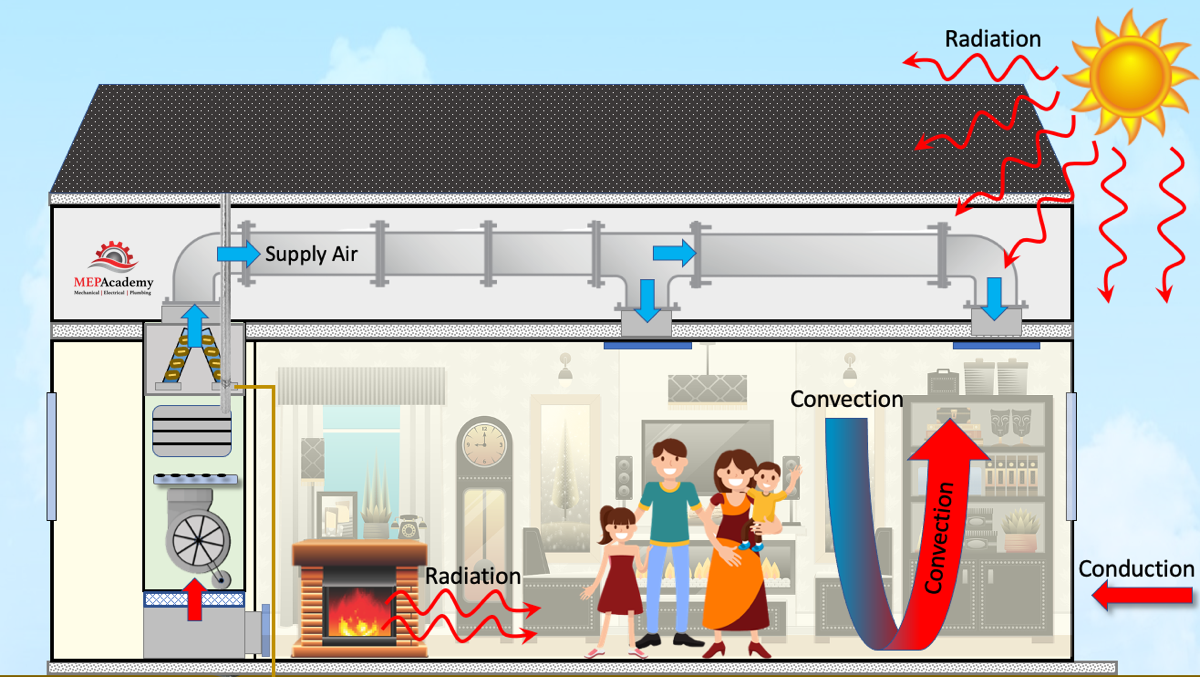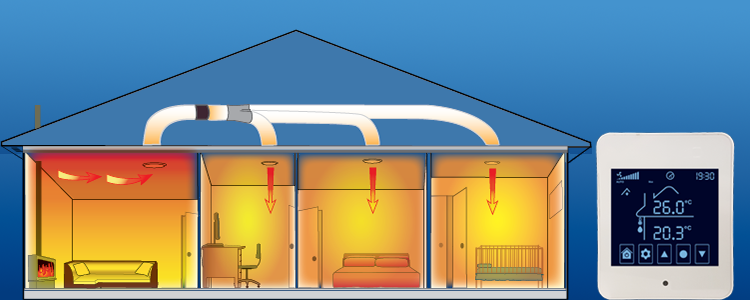Exploring the Perks and Applications of Heat Transfer Solutions in Modern Market
Heat transfer systems play an important role in contemporary industry. They incorporate numerous systems such as radiation, convection, and transmission, each adding to effective thermal monitoring. Industries like manufacturing and aerospace advantage substantially from these systems. As developments proceed, the assimilation of innovative products and technologies assures to enhance power performance. This development elevates essential inquiries concerning the future ramifications for sustainability and operational prices across multiple markets. What lies in advance in this recurring change?
Understanding Heat Transfer Principles
Heat transfer principles are basic to the procedure of different commercial systems. These principles encompass the systems of conduction, convection, and radiation, each playing an essential role in taking care of thermal power. Understanding conduction entails analyzing how Heat relocates via strong materials, while convection refer to Heat transfer in fluids, driven by fluid activity. Radiation, distinct from the various other 2, includes power transfer with electromagnetic waves. The performance of Heat transfer effects system efficiency, energy intake, and overall productivity. Reliable thermal administration is vital in procedures such as home heating, Heat, and air conditioning recuperation. By grasping these principles, industries can enhance their operations, minimize power prices, and improve tools long life, thus adding to a much more effective and lasting commercial landscape.
Trick Sorts Of Heat Transfer Solutions
While numerous markets use Heat transfer systems for diverse applications, numerous key types stand out as a result of their details functions and efficiencies. One of the most typical kinds include conduction, radiation, and convection systems. Conduction systems transfer Heat with direct call between products, making them effective in solid-state applications. Convection systems, on the other hand, use fluid movement to move Heat, suitable for heating or cooling down fluids and gases. Radiation systems run without a medium, depending on electro-magnetic waves to move Heat, perfect for high-temperature atmospheres. Each type serves unique objectives, permitting sectors to customize their Heat transfer remedies based on functional requirements, energy efficiency, and cost-effectiveness. Recognizing these systems is necessary for maximizing efficiency in numerous commercial settings.
Industrial Applications of Heat Transfer Technologies
The application of Heat transfer technologies in sector plays a crucial function in improving energy effectiveness and enhancing procedures. DVS Heat Transfer Systems. By implementing sophisticated Heat exchange systems, firms can considerably lower their environmental influence while boosting overall efficiency. This integration not just promotes sustainability yet also aligns with modern-day regulative and customer needs for greener methods
Power Efficiency Improvements
As sectors progressively focus on sustainability, energy effectiveness renovations in Heat transfer technologies have actually become important for decreasing functional costs and ecological effect. Enhanced Heat exchangers, for example, make use of advanced materials and layouts to maximize thermal performance while decreasing energy usage. Incorporating variable rate drives in pumping systems allows for far better control of fluid circulation, leading to significant energy cost savings. The execution of clever sensors and automation supplies real-time surveillance, enabling adjustments that enhance power usage. In addition, waste Heat healing systems record excess thermal power, converting it into usable power. These developments not only improve energy effectiveness however also contribute to a much more sustainable industrial landscape by lowering greenhouse gas exhausts and supporting compliance with environmental laws.
Refine Optimization Techniques
Process optimization techniques are vital in enhancing the efficiency and performance of Heat transfer technologies in industrial applications. These techniques entail refining procedures to make the most of Heat transfer performance while minimizing power intake and functional prices. Techniques such as computational fluid dynamics (CFD) modeling enable engineers to mimic and analyze Heat transfer scenarios, identifying locations for enhancement. Furthermore, real-time monitoring systems can provide valuable information on temperature gradients and circulation rates, making it possible for adjustments that enhance performance. In addition, carrying out sophisticated control strategies, such as anticipating analytics, can improve system responsiveness to varying functional demands. By applying these optimization strategies, industries can achieve higher thermal efficiency, decreased downtime, and boosted item high quality, ultimately bring about boosted competitiveness in the industry.

Ecological Effect Reduction
While industrial Heat transfer innovations are essential for functional efficiency, their application likewise offers chances for substantial ecological effect decrease. By improving energy effectiveness, these systems decrease fuel consumption, causing reduced greenhouse gas emissions. Advanced Heat exchangers can recuperate waste Heat, rerouting it to preheat incoming fluids, thus lowering power requirements. Additionally, the integration of Heat transfer innovations in eco-friendly power systems, such as solar thermal and geothermal applications, supports the shift to sustainable practices. Industries that utilize these innovations additionally take advantage of minimized functional prices and boosted governing conformity. Overall, the tactical application of Heat transfer systems not just reinforces productivity however likewise fosters a much more sustainable commercial landscape, adding to international environmental goals.
Advantages of Reliable Heat Transfer Solutions
Effective Heat transfer systems provide substantial benefits in contemporary market, mostly with enhanced energy performance and price reduction. By optimizing thermal management, these systems minimize power waste, bring about reduced operational costs (DVS Heat Transfer Systems). Businesses can attain higher sustainability and boosted earnings.

Power Performance Improvements
As markets progressively focus on sustainability and cost-effectiveness, power performance renovations in Heat transfer systems have emerged as an important emphasis. Boosted performance in these systems leads to reduced energy intake, enabling centers to run even more sustainably. By enhancing Heat transfer approaches, sectors can decrease waste Heat and attain far better thermal management, significantly lowering their ecological influence. Developments in modern technologies such as Heat exchangers and insulation products add to improved performance and dependability. Carrying out energy-efficient Heat transfer options not only supports view it conformity with regulative criteria however also cultivates a society of development within organizations. Ultimately, these renovations are crucial in lining up commercial procedures with global energy preservation goals, leading the way for an extra sustainable future in production and processing fields.
Price Reduction Opportunities
By maximizing Heat transfer systems, sectors can expose considerable cost reduction possibilities that improve their profits. Effective Heat transfer reduces power intake, causing lower utility expenses and reducing functional expenses. Furthermore, boosted system efficiency decreases the need for upkeep and fixings, in addition conserving expenses over time. Enhanced Heat transfer can likewise extend devices life-span, permitting firms to delay capital investment on replacements. Additionally, waste Heat recuperation systems can transform excess Heat right into functional power, additionally driving down prices. These systems not only enhance procedures but likewise add to sustainability campaigns, positioning business positively in an increasingly eco-conscious market. Generally, the economic advantages of efficient Heat transfer systems are vital and considerable for affordable benefit.
Innovations in Heat Transfer Solutions
Exactly how can contemporary sector boost its procedures via cutting-edge Heat transfer remedies? By taking on innovative products and modern technologies, industries can significantly improve thermal efficiency and performance. Innovations such as nanofluids, which enhance Heat transfer capacities past standard fluids, and phase modification products that keep and release thermal power, are acquiring traction. Additionally, the combination of wise sensors and IoT devices permits real-time monitoring and optimization of Heat transfer procedures, decreasing waste and improving system responsiveness. Moreover, additive production strategies make it possible for the production of more complex Heat exchangers that optimize surface area while reducing product usage. Collectively, these technologies drive functional efficiency and develop affordable benefits in various sectors, consisting of energy, aerospace, and manufacturing.
The Duty of Heat Transfer in Sustainability Efforts
While the press for sustainability remains to reshape markets, the duty of Heat transfer technologies becomes significantly vital in achieving ecological goals. Effective Heat transfer systems promote power efficiency by maximizing thermal administration in various processes, considerably reducing power consumption and greenhouse gas exhausts. Advanced Heat exchangers are made use of in industrial applications to redeem waste Heat, therefore decreasing energy waste. Furthermore, advancements such as stage change materials enhance thermal storage, adding to eco-friendly energy integration. The adoption of sustainable fluids in Heat transfer systems can decrease environmental effect. By focusing on effective Heat transfer, markets not only enhance functional efficiency but additionally align with global sustainability initiatives, fostering a cleaner, much more sustainable future.
Frequently Asked Questions
How Do Heat Transfer Systems Impact Energy Prices in Production?
Heat transfer systems markedly influence energy expenses in production by enhancing effectiveness, minimizing waste, and maximizing thermal management. These improvements bring about decrease functional expenditures, eventually benefiting overall productivity and profitability in industrial procedures.
What Upkeep Is Required for Heat Transfer Equipments?
Upkeep for Heat transfer systems consists of normal examinations, cleansing of components, checking fluid degrees and useful link problems, replacing worn parts, and making sure correct insulation. These actions boost effectiveness, prolong life expectancy, and prevent pricey break downs in procedure.
Are There Security Worries With Heat Transfer Equipments?
Security interest in Heat transfer systems consist of prospective leakages, pressure build-up, and thermal threats. Appropriate layout, routine maintenance, and adherence to security methods are necessary to alleviate these threats and ensure secure operation in commercial atmospheres.
Exactly How Can I Choose the Right Heat Transfer System for My Service?
Choosing the best Heat transfer system involves examining factors such as effectiveness, application needs, budget plan restrictions, and safety criteria. A complete evaluation of these elements will certainly aid ensure excellent performance and reliability in company operations.
What Prevail Failings in Heat Transfer Solutions and Their Reasons?

Comprehending conduction includes examining just how Heat moves with strong materials, while convection pertains to Heat transfer in liquids, driven by liquid activity. By maximizing Heat transfer methods, markets can decrease waste Heat and achieve much better thermal monitoring, significantly reducing their ecological influence. top article Waste Heat recovery systems can transform excess Heat right into useful power, better driving down costs. Advanced Heat exchangers are utilized in industrial applications to reclaim waste Heat, thus reducing power waste. Usual failings in Heat transfer systems include leakages, rust, and inefficient Heat exchange.